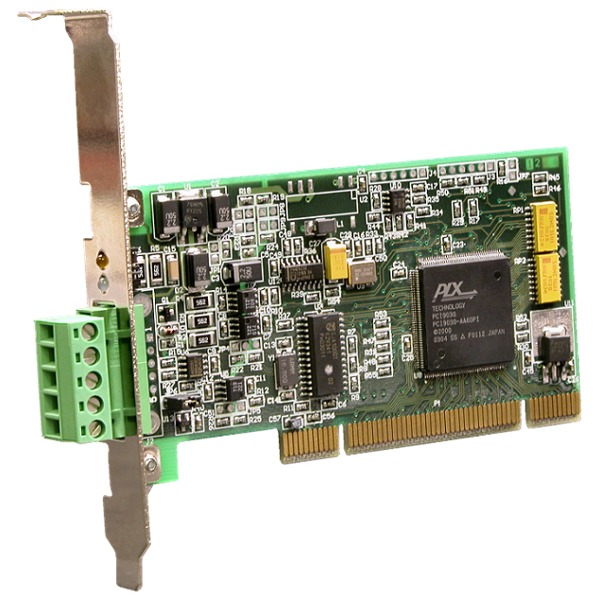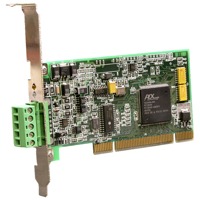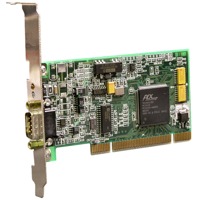CANPCI Series - Interfaces Universal PCI Bus Computers zo the CAN network
Controller Area Network (CAN) is applied as an embedded communication system for intelligent devices in factories, medical equipment and even as an internal bus. So transmitting high-speed CAN data into a desktop PC is sometimes necessary for programmers, project engineers and diagnostic technicians.
The CANPCI adapter, both cost-effective and versatile, is designed for either 5 V or 3.3 V bus operation for PCI compatible computers. The CANPCI adapter supports 8-bit transfers and takes advantage of the high-speed PCI bus for high data transfer speed.
This design is based on the ever-popular Philips SJA1000 CAN stand-alone controller chip, which is employed in both automotive and industrial applications. The SJA1000 affords more benefits than its predecessor, the 82C200. It can operate in the BasicCAN mode—or PeliCAN mode, which supports the cAN 2.0B specification with 29-bit identifiers. The SJA1000 operates from a 16 MHz clock and features a larger receive buffer and better acceptance-filtering. Data rates are possible up to 1 Mbps.
The newer PeliCAN mode is equipped with various features: error counters with read/write access; programmable error warning limit; last error register; error interrupt for each CAN-bus error; arbitration lost interrupt with detailed bit position; single-shot transmission (no retransmission); listen-only mode (no acknowledge, no active error flags); acceptance-filter extension (4-byte mask); and reception of "own" messages (self-reception request).
The CANPCI is available in two models: the CANPCI-DN incorporates the DeviceNet physical layer, whereas the CANPCI-CO provides a CANopen physical layer.
Optically-isolated transceivers offer reverse-voltage and short-circuit protection for both the CANPCI-DN (implementing the DeviceNet 5-position, open-style connector) and the CANPCI-CO (implementing the CANopen DB-9 connector).




